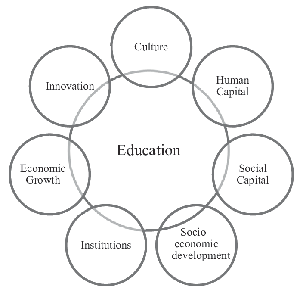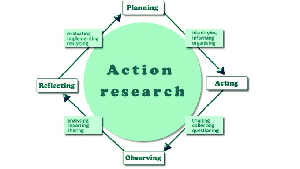In today’s digital age, having an understanding of digital literacy is more important than ever, especially in the field of education. But what exactly is digital literacy? Simply put, it refers to the ability to use digital tools and technologies effectively and responsibly to find, evaluate, create, and communicate information.
Digital literacy goes beyond basic computer skills; it involves a range of skills and competencies, including critical thinking, problem-solving, and information literacy. In the education sector, digital literacy plays a vital role in preparing students for the future. It empowers them to navigate the vast ocean of information available online, assess its credibility, and use it to gain knowledge and insight.

Photo by Unsplash
Digital literacy also promotes creativity and collaboration among students. With the ability to leverage digital tools, students can engage in project-based learning, develop multimedia presentations, and work collaboratively with their peers or experts from around the world.
Importance of digital literacy in education
Digital literacy is not just a nice-to-have skill; it is an essential requirement in today’s information-driven society. In the education sector, digital literacy plays a crucial role in equipping students with the skills they need to succeed in their academic and professional lives.
One of the key reasons why digital literacy is important in education is its impact on student learning outcomes. With the ability to effectively navigate and evaluate digital information, students can access a wide range of resources, enabling them to deepen their understanding of subjects and engage in self-directed learning. This, in turn, leads to improved academic performance and critical thinking skills.
Digital literacy also fosters creativity and innovation in the classroom. By leveraging digital tools, students can explore new ways of presenting information, such as creating videos, infographics, or interactive presentations. This not only enhances their communication skills but also encourages them to think outside the box and express their ideas in unique and engaging ways.
Digital literacy promotes collaboration and global connectivity. Through online platforms and communication tools, students can collaborate with their peers on group projects, connect with experts in various fields, and gain a broader perspective on different cultures and perspectives. This not only enhances their social and communication skills but also prepares them for an increasingly interconnected world.
Skills and competencies of digital literacy
Digital literacy encompasses a wide range of skills and competencies that are essential for navigating the digital landscape effectively. Some of the key skills and competencies of digital literacy include:
Information literacy: The ability to evaluate and assess the credibility of digital information, as well as the skills to effectively search, retrieve, and use information from online sources.
Media literacy: The ability to critically analyze and interpret media messages, including understanding bias, misinformation, and the persuasive techniques used in digital media.
Technological proficiency: The ability to effectively use digital tools and technologies, including hardware, software, and online platforms, to accomplish tasks and solve problems.
Critical thinking and problem-solving: The ability to analyze and evaluate information, think critically, and solve complex problems using digital tools and technologies.
Digital citizenship: The understanding of ethical and responsible behavior in the digital world, including issues related to privacy, security, and online etiquette.
Communication and collaboration: The ability to effectively communicate, collaborate, and share ideas using digital tools and platforms, both within and outside the classroom.
By developing these skills and competencies, students can become digitally literate individuals who can navigate the digital landscape with confidence and use digital tools to enhance their learning and personal growth.
Digital literacy in the classroom
Integrating digital literacy into the classroom is essential to ensure that students develop the necessary skills and competencies to thrive in a digital world. However, it requires more than just providing access to technology; it involves thoughtful planning, curriculum design, and teacher support.
One effective way to incorporate digital literacy into the classroom is through project-based learning. By engaging in hands-on projects that require students to use digital tools and technologies, they can develop the necessary skills while also deepening their understanding of the subject matter. For example, students can create multimedia presentations, design websites, or develop digital portfolios to showcase their learning.
Another approach is to embed digital literacy skills within existing subject areas. For instance, in English classes, students can learn how to evaluate the credibility of online sources when conducting research, while in science classes, they can use digital tools to analyze data and present their findings. By integrating digital literacy into the curriculum, students can see the relevance of these skills in real-world contexts and better understand their importance.
Providing opportunities for collaborative learning and peer-to-peer interaction can enhance digital literacy skills. Group projects, online discussions, and virtual collaborations enable students to develop communication and collaboration skills, as well as learn from one another’s expertise and perspectives. This not only enhances their digital literacy but also promotes a sense of community and shared learning.
Integrating digital literacy into the curriculum
To effectively integrate digital literacy into the curriculum, it is essential to have a structured and well-planned approach. Here are some strategies for incorporating digital literacy into the curriculum:
Curriculum alignment: Ensure that digital literacy skills are aligned with curriculum objectives and learning outcomes. Identify the specific skills and competencies that students need to develop in each subject area and design learning activities that target those skills.
Professional development: Provide teachers with professional development opportunities to enhance their own digital literacy skills and pedagogical practices. This can include workshops, online courses, and collaboration with other educators.
Digital tools and resources: Identify and provide access to a range of digital tools and resources that support digital literacy development. This can include online databases, educational apps, interactive websites, and multimedia creation tools.
Assessment and feedback: Develop assessment strategies that measure students’ digital literacy skills, such as evaluating their ability to critically analyze digital information or create multimedia presentations. Provide timely and constructive feedback to help students improve their skills.
Ongoing support: Offer ongoing support and resources to both teachers and students to ensure continuous improvement in digital literacy skills. This can include a digital literacy support team, online forums, and a repository of best practices and resources.
By implementing these strategies, schools can create a learning environment that fosters digital literacy development and prepares students for the digital world they will encounter beyond the classroom.
Tools and resources for teaching digital literacy
Numerous tools and resources are available to support the teaching of digital literacy. Here are some examples:
Digital libraries and databases: Online platforms that provide access to a wide range of digital resources, such as e-books, scholarly articles, and multimedia materials. Examples include JSTOR, Google Scholar, and ProQuest.
Educational apps: Mobile applications designed specifically for educational purposes, covering various subjects and skills. Examples include Khan Academy, Duolingo, and Quizlet.
Interactive websites: Websites that offer interactive learning experiences, such as simulations, virtual labs, and online quizzes. Examples include PhET Interactive Simulations, National Geographic Kids, and BBC Bitesize.
Multimedia creation tools: Software or online platforms that allow students to create multimedia presentations, videos, or animations. Examples include Adobe Spark, Powtoon, and Animoto.
Online collaboration tools: Platforms that enable students to collaborate on projects, share files, and communicate with their peers and teachers. Examples include Google Classroom, Microsoft Teams, and Slack.
These tools and resources can enhance student engagement, promote active learning, and provide opportunities for students to develop their digital literacy skills in meaningful and authentic ways.
Challenges and obstacles to digital literacy in education
While digital literacy offers numerous benefits to education, there are also challenges and obstacles that need to be addressed. Some of the common challenges include:
Access to technology
Not all students have equal access to technology and the internet, which can create a digital divide. Schools and policymakers need to ensure that all students have access to the necessary technology and internet connectivity to fully participate in digital learning.
Teacher training and support
Many teachers may not feel confident or adequately trained in integrating digital tools and technologies into their teaching practices. Providing ongoing professional development and support is crucial to help teachers develop the necessary skills and confidence to effectively teach digital literacy.
Digital safety and security
With increased online activity, students need to be educated about digital safety, privacy, and responsible online behavior. Schools need to implement policies and educate students about online security to protect them from potential risks.
Information overload
The vast amount of information available online can be overwhelming for students, making it challenging to identify reliable sources and discern accurate information from misinformation. Teaching students how to evaluate and critically analyze information is essential to develop their digital literacy skills.
Changing technology landscape
Technology is continuously evolving, and new tools and platforms emerge regularly. Keeping up with these changes and integrating them into the curriculum can be a challenge for educators. Schools need to provide ongoing support and resources to ensure that teachers and students stay up-to-date with the latest technological advancements.
By addressing these challenges, schools can create a more inclusive and equitable learning environment that promotes digital literacy for all students.
Role of teachers in promoting digital literacy
Teachers play a crucial role in promoting digital literacy among students. They are not only responsible for teaching the necessary skills and competencies but also for fostering a positive and supportive learning environment. Here are some ways in which teachers can promote digital literacy:
Model digital citizenship
Teachers should model responsible and ethical behavior online, demonstrating good digital citizenship. This includes respecting privacy, engaging in respectful online communication, and teaching students about online safety.
Provide explicit instruction
Teachers should explicitly teach digital literacy skills, such as information evaluation, online research, and critical thinking. They should guide students in understanding how to find reliable sources, analyze information, and communicate effectively online.
Facilitate authentic learning experiences
Teachers should design learning experiences that provide authentic opportunities for students to apply their digital literacy skills. This can include real-world projects, simulations, and collaboration with experts outside the classroom.
Foster collaboration and peer learning
Teachers should create opportunities for students to collaborate and learn from one another’s expertise. This can involve group projects, online discussions, and peer feedback on digital creations.
Provide feedback and assessment
Teachers should provide timely and constructive feedback on students’ digital literacy skills and provide opportunities for self-reflection and improvement. They should also incorporate digital literacy skills into their assessment practices to measure student progress.
By taking an active role in promoting digital literacy, teachers can empower students to become confident and responsible digital citizens who can navigate the digital world with ease and make meaningful contributions.
Impact of digital literacy on student success
Digital literacy has a significant impact on student success, both academically and personally. Students who are digitally literate are better equipped to navigate the challenges of the modern world and thrive in an increasingly digital society.
Academically, digital literacy enhances students’ ability to access information, analyze and evaluate it critically, and communicate their ideas effectively. This leads to improved academic performance, higher-order thinking skills, and increased engagement in the learning process. Students who are digitally literate are also more likely to develop a love for learning, as they can explore and pursue their interests beyond traditional classroom boundaries.
Personally, digital literacy empowers students to become lifelong learners and active participants in society. It equips them with the skills to adapt to new technologies and embrace innovation. Digital literacy also promotes creativity, collaboration, and problem-solving skills, which are essential for success in the workplace and in life.
Moreover, digital literacy enhances students’ ability to find and pursue career opportunities in an increasingly digital and global job market. Many professions require digital literacy skills, and students who possess these skills have a competitive edge in the job market.
Conclusion
Digital literacy is a vital skill in today’s education landscape. It empowers students to navigate the digital world effectively, critically evaluate information, and communicate their ideas with confidence. By integrating digital literacy into the curriculum and providing teachers with the necessary support and resources, schools can prepare students for success in the digital age and equip them with the skills they need to thrive in an ever-evolving society. The future of education lies in embracing digital literacy and harnessing its limitless possibilities.




